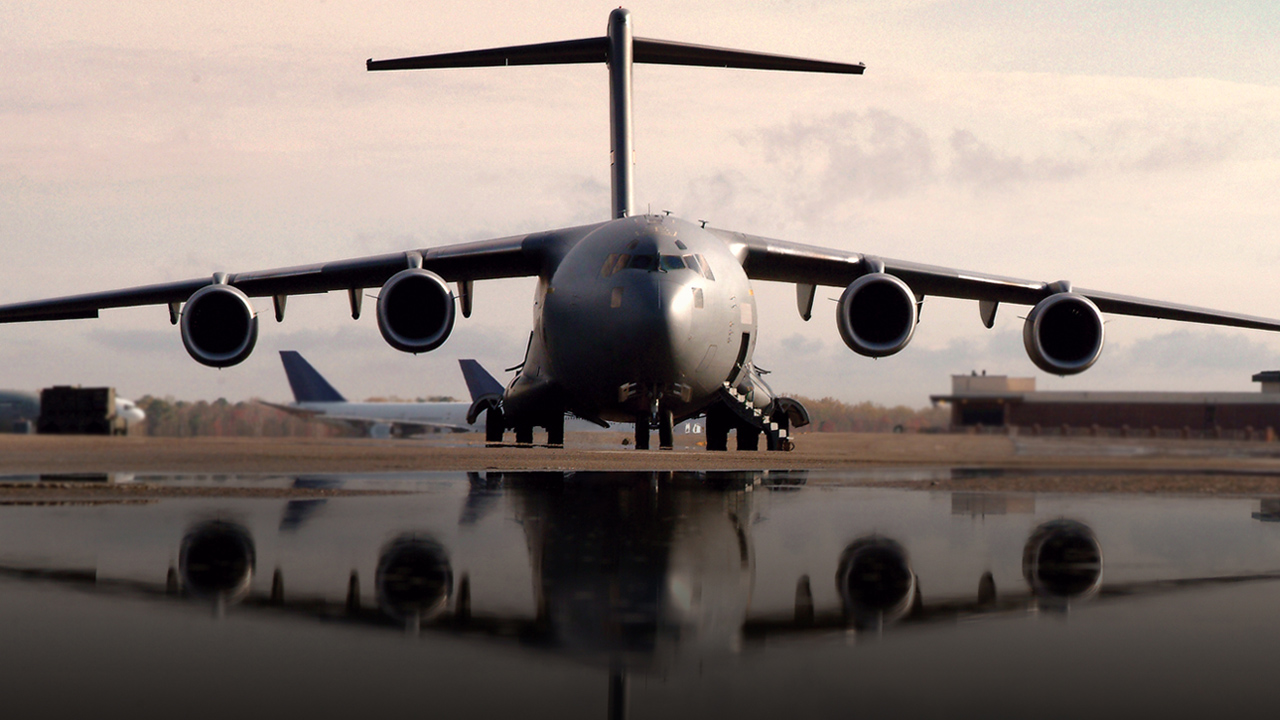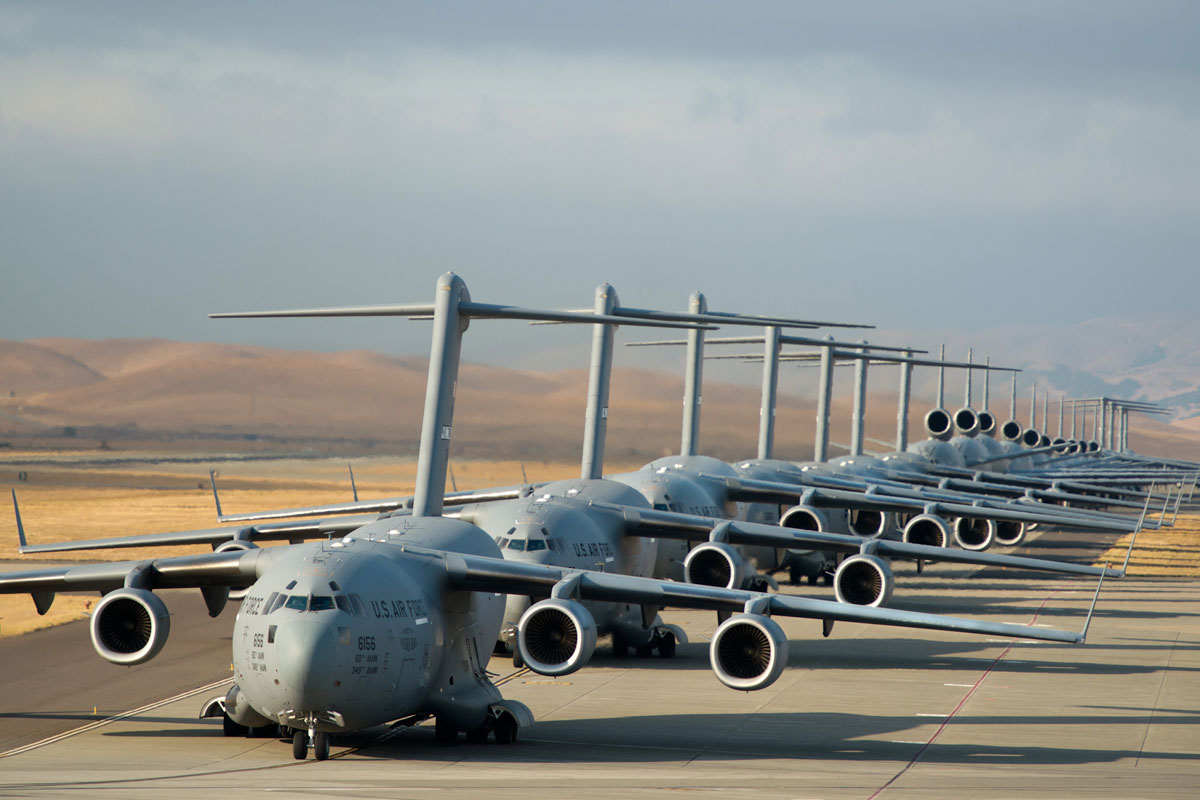The C-17 Globemaster III, developed by McDonnell Douglas (now part of Boeing), is a critical component of the U.S. Air Force’s strategic airlift capabilities. Known for its impressive versatility and performance, the C-17 has been instrumental in various military operations and humanitarian missions around the world. Here are some key facts about this remarkable aircraft:

Development and Introduction
- Origins: The C-17 Globemaster III was developed to replace the aging C-141 Starlifter and to provide enhanced airlift capabilities for the U.S. Air Force. The aircraft was designed to handle large cargo and operate from short and austere airfields.
- First Flight: The C-17’s maiden flight occurred on September 15, 1991. Its development was part of a broader effort to modernize the U.S. Air Force’s airlift fleet.
- Service Entry: The C-17 entered service with the U.S. Air Force in 1995. It has since become a key asset in strategic and tactical airlift operations.

Design and Specifications
- Dimensions:
- Length: Approximately 174 feet (53 meters)
- Wingspan: About 169.8 feet (51.8 meters)
- Height: Roughly 55 feet (16.8 meters)
- Maximum Takeoff Weight: The C-17 can handle a maximum takeoff weight of approximately 585,000 pounds (265,000 kilograms).
- Cargo Capacity: The aircraft has a maximum payload capacity of around 170,900 pounds (77,500 kilograms). It can carry oversized cargo, including military vehicles, helicopters, and large equipment.
- Engines: The C-17 is powered by four Pratt & Whitney F117-PW-100 turbofan engines. Each engine provides a thrust of around 40,440 pounds (180 kN), enabling the aircraft to perform at high performance levels.
- Range: The C-17 has a maximum range of about 2,400 miles (3,900 kilometers) with a full payload. Its range can be extended with aerial refueling.
- Crew: The aircraft is typically operated by a crew of three, including a pilot, co-pilot, and loadmaster.

Capabilities and Features
- Versatile Cargo Handling: The C-17’s design allows for the transportation of a wide variety of cargo. Its large cargo hold is capable of accommodating oversized items, and the aircraft features a rear ramp for quick loading and unloading.
- Short Takeoff and Landing: One of the C-17’s notable features is its ability to operate from short and unpaved airstrips. This capability allows it to access austere locations and support operations in remote areas.
- Advanced Systems: The C-17 is equipped with advanced avionics and flight control systems. It features a fly-by-wire system, which enhances its maneuverability and operational efficiency.
- Humanitarian Missions: In addition to military operations, the C-17 is frequently used for humanitarian and disaster relief missions. Its ability to carry large quantities of supplies and equipment makes it ideal for responding to natural disasters and emergencies.
Operational History
- Military Operations: The C-17 has played a vital role in various military conflicts, including operations in Iraq and Afghanistan. Its ability to quickly deploy troops and equipment has made it an essential asset in modern warfare.
- Humanitarian Efforts: The aircraft has been involved in numerous humanitarian missions, including relief efforts for natural disasters such as earthquakes, floods, and hurricanes. Its capability to transport large volumes of aid quickly has been crucial in these efforts.
- Global Reach: The C-17 has been used extensively by allied nations and has demonstrated its global reach by conducting missions worldwide. Its versatility has made it a valuable asset for various international partners.

Legacy and Future
The C-17 Globemaster III remains a cornerstone of the U.S. Air Force’s airlift capabilities. Its design and performance have set a high standard for strategic and tactical airlift operations. Although production of the C-17 ended in 2015, the aircraft continues to be an integral part of airlift operations, with ongoing upgrades and maintenance ensuring its effectiveness for years to come.
In summary, the C-17 Globemaster III is a testament to advanced engineering and design in military aviation. Its capabilities, versatility, and performance have solidified its role as a vital asset for the U.S. Air Force and its allies. As it continues to serve in various missions, the C-17 remains a symbol of effective and adaptable airlift capability.





